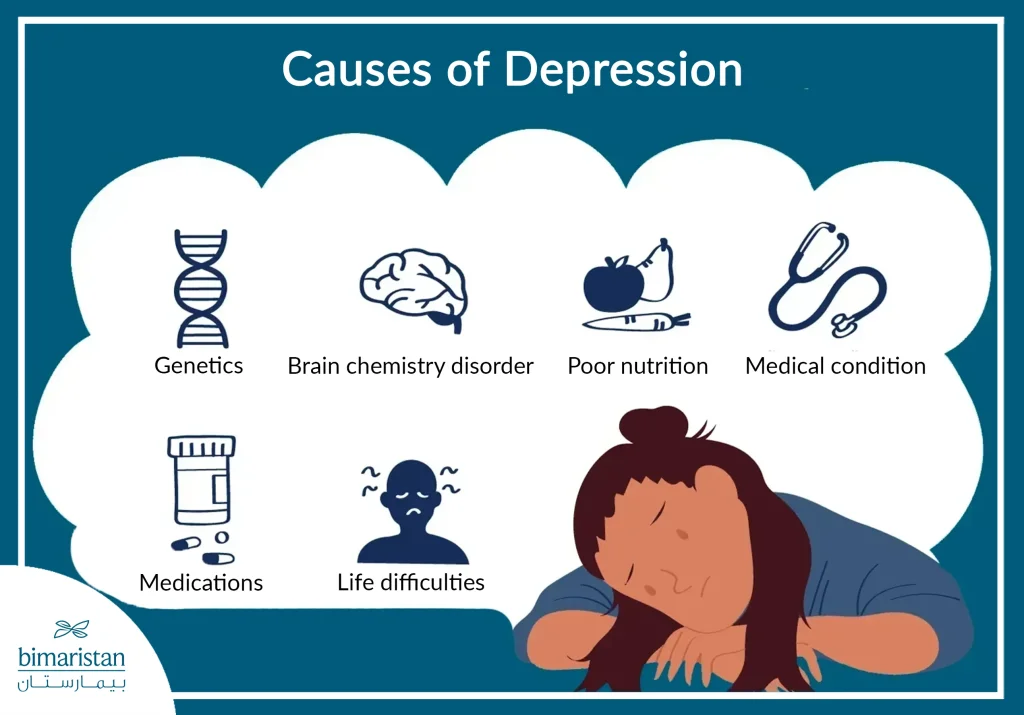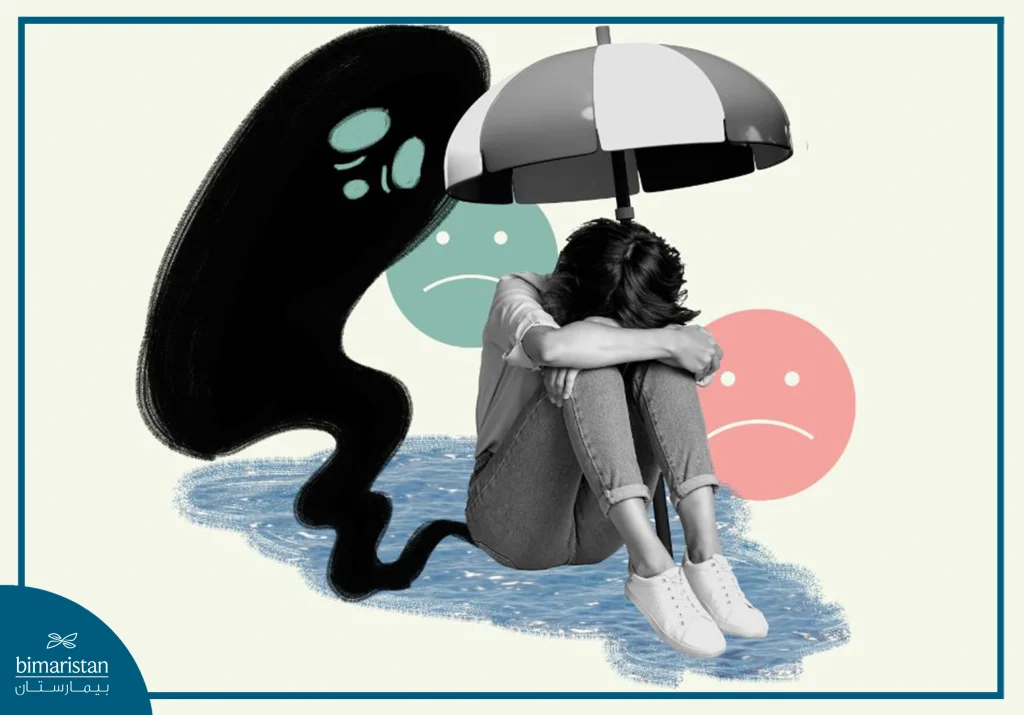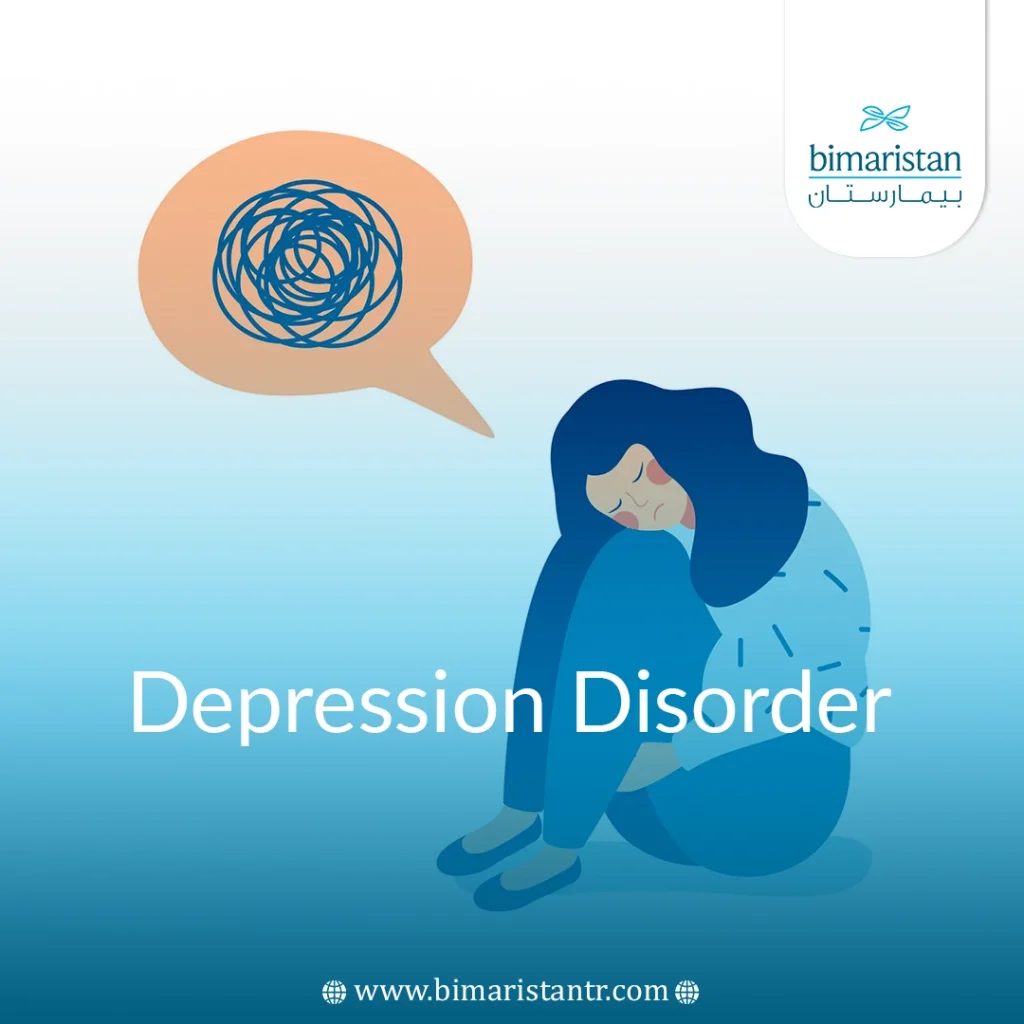In today’s fast-paced world, depression disorder is one of the most common and impactful mental illnesses, significantly affecting people’s lives. Unlike temporary sadness, depression disorder is a serious condition that alters thinking, emotions, and daily behaviors, requiring understanding and attention.
But the most important question is: What are the reasons behind the emergence of this disease, and how can we prevent it?
This article explores depression disorder, examining its causes, from biological and genetic factors to environmental and social influences. It also highlights effective prevention strategies to help build a healthy and stable mental life.
Information about depression
Here are some facts you may not know about depression:
- Depression is one of the most common mental illnesses, affecting an estimated 264 million people worldwide.
- About 3.8% of the population suffers from depression disorder, including 5% of adults (4% of men and 6% of women). The rate rises to 5.7% in those over 60 years of age.
- Environmental and psychological factors can play a role in exacerbating depression, such as stress, pressure, and social isolation.
- Genetics may play a role in the development of depression disorder; if you have a relative who suffers from depression, you may be at risk of developing it as well.
- Depression disorder can worsen overall health and increase the risk of heart disease and stroke.
- The risk of suicide among depressed patients left untreated ranges from 2.2 to 15%, and depression is present in at least 50% of suicides.
Definition of depression disorder
Depression disorder is a mental disorder characterized by persistent sadness and a loss of interest in daily activities and is a common health condition that affects the quality of life of those affected.
Most people think that this disease is just a temporary state of unhappiness that goes away within a day or two, but this is not the case, as the symptoms of anxiety and depression affect the entire body psychologically and health-wise and last for a long time, up to months or more if left untreated.
Depressed patient behaviors
The behaviors of a depressed patient can vary depending on the severity of the condition and the person’s circumstances. Here are some common attitudes and behaviors that people with depression may exhibit:
- Social isolation:
- Avoiding friends and family.
- Withdrawing from social activities that used to be enjoyable.
- Changes in appetite:
- Loss of appetite or overeating.
- Weight changes for no apparent reason.
- Sleep disturbances:
- Insomnia or excessive sleep.
- Difficulty waking up in the morning or sleeping for long hours.
- Fatigue and low energy:
- Feeling constantly tired or exhausted.
- Lack of energy to do daily activities.
- Negative thinking:
- Constantly thinking negative thoughts or feeling hopeless.
- Focusing on personal failures or blaming yourself excessively.
- Difficulty concentrating:
- Having difficulty making decisions or focusing on tasks.
- Forgetting things easily or getting distracted.
- Mood changes:
- Feeling sad or anxious most of the time.
- Bouts of anger or unexplained emotions.
- Physical pain without a clear medical cause:
- Feeling headaches or body aches for no apparent reason.
- Loss of interest in favorite activities:
- Loss of interest in hobbies or activities that were previously enjoyable.
- Thoughts of suicide or self-harm:
- Thinking about self-harm or suicide requires urgent intervention and professional help.
These behaviors may be signs of depression and require attention and help from mental health professionals for proper support and treatment.

Types of depression disorder
There are many types of depression disorder that an individual can develop:
- Major depression (most common): severe depression characterized by persistent sadness and loss of interest and pleasure in daily activities. It lasts about two weeks and interferes with daily activities.
- Chronic (persistent) depressive disorder is less severe than the previous type but lasts longer, up to two years.
- Bipolar depression is characterized by extreme mood swings ranging from deep sadness to mania.
- Seasonal depression occurs during a particular season of the year – usually in the fall and winter – and is caused by short days and lack of exposure to light.
- Perinatal depressive disorder may appear as pregnancy depression or postpartum depression in some women and is characterized by sadness, anxiety, and fatigue.
- Depression with psychotic symptoms, where delusions and auditory or visual hallucinations accompany depression, is sometimes called psychotic depression.
- Depression and anxiety; where anxiety occurs in 70% of patients with depression.
Depression treatment varies from one patient to another depending on the type of depression.
Causes of depression disorder
There are many causes of depression, but some of them may not be obvious to the patient, so it is necessary to visit a specialized psychiatrist when the patient suffers from depression for a long time without improvement. Some of the most important causes of anxiety and depression include the following:
- Disruption of brain chemicals: There may be a chemical imbalance in the parts of the brain that control mood, thoughts, sleep, appetite, and behavior in people with depression.
- Changes in the level of hormones in the body: This is the most important cause of depression disorder in women, especially during or before the menstrual cycle, during childbirth, and menopause.
- Heredity: You are more likely to develop depression if you have a family member who has suffered from this mental illness.
- Childhood accidents: Childhood trauma can change the way a person reacts to stressful events and lead to depression.
- Brain structure: There is a higher risk of depression if the frontal lobe of your brain is less active.
- Pain: People who experience prolonged physical, emotional, or chronic pain are more likely to develop depression.
- Alcohol or drug addiction.
- Certain diseases: Some diseases or health conditions may increase your risk of depression. The most important of these diseases are: chronic diseases, insomnia and chronic pain, Parkinson’s disease, stroke, heart attacks and cancer.
Causes of depression disorder in women
- Hormonal changes:
- Pregnancy and childbirth.
- Menopause.
- Menstrual cycle.
- Psychological factors:
- Stress and stress from social expectations.
- Family and work responsibilities.
- Feeling helpless or frustrated.
- Social factors:
- Sexual discrimination.
- Domestic violence.
- Social isolation or lack of social support.
- Genetic factors:
- Having a family history of depression increases the risk.
- Physical illnesses:
- Chronic or painful illnesses may increase the likelihood of depression.
- Cultural factors:
- Cultural or societal pressures limit the freedom to express feelings.
These factors can interact and increase the risk of depression in women, requiring appropriate support and timely treatment.

Risk factors for depression disorder
Other factors may increase a person’s likelihood of developing depression disorder, such as
- Gender: Women are twice as likely to be affected as men (especially during pregnancy or after childbirth).
- Socioeconomic status: Financial issues and poor social status increase the risk of depression.
- Medications: Some medications increase a person’s risk of developing depression. Among them are the main ones: Birth control pills, corticosteroids (corticosteroids), and beta-blockers (antihypertensive drugs).
- Vitamin deficiency: Recent studies have shown that vitamin D deficiency may be a cause of depression or related to some of the symptoms.
Diagnosis of depression disorder
It is important to seek medical help if you suspect or suspect that someone is depressed. Depression is usually diagnosed by psychiatrists who specialize in mental health, and below are some of the steps a psychiatrist can take to diagnose this illness:
- Doctor’s interview: The doctor will interview the patient to understand their symptoms and medical and psychological history. The doctor may ask about the physical, emotional, and behavioral symptoms the patient is experiencing, as well as how these symptoms affect their daily life.
- Depression assessment tests: The patient may be asked to complete questionnaires or assessment tests such as the Becker Depression Inventory or the Hamilton Depression Inventory. These tests are used to assess the severity of symptoms and determine whether or not the patient is depressed.
- Rule out other causes of depression: Your doctor may need to rule out any other possible causes of depression-like symptoms, such as other physical or mental illnesses.
- Diagnosis of depression secondary to illness: The presence of a certain health condition may be the cause of the disorder, so the patient may be required to undergo medical tests or blood tests to diagnose it.
- Establish a final diagnosis: Based on the information gathered from the interview and tests, the doctor diagnoses the disease and determines its severity (mild, moderate, severe).
The patient should speak frankly with the doctor and explain in detail all the symptoms he is suffering from so that he can help him recover as quickly as possible.
Treatment for depression disorder
Treatment for depression disorder includes several options depending on the severity of symptoms and the individual’s needs. Here are some common approaches:
- Medication:
- Antidepressants: used to improve mood and relieve symptoms.
- Hormonal balancing medications: in cases of depression associated with hormonal changes.
- Psychotherapy:
- Cognitive behavioral therapy (CBT): aims to change negative thoughts and harmful behaviors.
- Dynamic psychotherapy: helps in understanding repressed feelings and personal relationships.
- Behavioral therapy:
- Life skills training: helps in developing strategies to deal with stress and difficulties.
- Relaxation and meditation techniques: such as yoga or meditation to promote relaxation and psychological well-being.
- Social interventions:
- Social support: such as joining support groups or talking to friends and family.
- Lifestyle improvements: such as exercising regularly and following a healthy diet.
- Electroconvulsive therapy (ECT):
- Used in cases of severe depression or depression that is resistant to other treatments.
- Complementary and alternative therapies:
- such as herbal medicine, art therapy, and music therapy.
It is important that a mental health professional supervise diagnosis and treatment to ensure that appropriate care and support are provided.

Ways to prevent depression disorder
In addition to treatment, some steps can be taken to prevent and eliminate the disorder in the community, such as:
- Maintain a healthy lifestyle: Eat a balanced and healthy diet, exercise regularly, and get enough sleep.
- Stress management: Learn stress management techniques such as meditation, deep relaxation, and breathing exercises.
- Positive thinking: By trying to change negative thoughts into positive ones and encouraging self-confidence.
- Maintain social connections: Maintain strong social connections and enjoy leisure time with friends and family.
- Avoid stimulants: Stimulants such as caffeine and alcohol should be avoided as they increase feelings of anxiety and stress.
- Seek help: The patient should seek help when experiencing symptoms and should not hesitate to seek appropriate treatment.
It is important for patients to remember that depression is a treatable disease and that their condition can be improved with proper treatment and support. Patients should seek medical help and not feel ashamed or stigmatized.
Sources:
